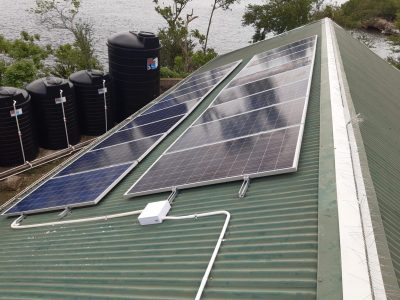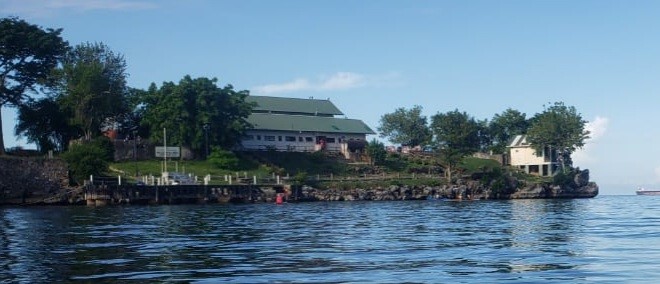The Nelson Island, one of six islands that lies west of Port-of-Spain in the Gulf of Paria, has been made a Sustainable Eco-Development by the National Trust.
Minister of Planning and Development Camille Robinson-Regis said that the goal was achieved through the installation of a solar-powered system to provide the electrical needs of the island inclusive of lighting, security systems, data communications, appliances and power outlets.
In addition, after years of depending on a boat to periodically bring fresh water to the island, a small desalination plant has been installed, driven by solar power, to produce all of the potable water required for use on the island.

Solar panels installed at Nelson Island
Robinson-Regis said, “The space is now a greater source of heritage pride, symbolising how Trinidad and Tobago (T&T), can celebrate and harmonise its colourful sometimes turbulent past with its unlimited potential and an environmentally sustainable future.”
She said the project is also in keeping with the achievement of T&T’s commitments to the global community under the Paris Agreement as laid down in the Nationally Determined Contribution (NDC), and the achievement of Government’s national policy target to increase the total amount of electricity generated from renewable energy sources by 2021.
Robinson-Regis also reiterated the Government’s commitment to work towards the development of legislation to facilitate the addition of renewable energy sources in Trinidad and Tobago.
Nelson Island is one of a cluster of six small islands called the “Five Islands” located in the Gulf of Paria approximately 2.5 kilometres due south of Chaguaramas and due east of the prison island of Carrera.
They are, in descending order of size: Caledonia, Nelson, Lenagan, Rock, Pelican and Craig. Craig is joined to Caledonia by a human-made stone causeway.
These islands are the remnants of an ancient limestone deposit which extends from the hills of Laventille to Patos Island in the west.
The Five Islands are covered with centuries-old intact structures, the ruins of houses, the remains of medical facilities, defunct military equipment, and other structural objects and artefacts. Therefore, these islands are inextricably linked through geology, geography and history.
Nelson Island has had numerous functions within the history of Trinidad.
The Islands were used as a convalescent and repatriation station for newly arrived and ex-indentured Indian Immigrants.
In World War Two, the Five Islands formed a part of the Chaguaramas base and served as a naval station for the United States Navy.
The island also hosted an internment camp for enemy alien internees from Europe and a detention centre for labour leader Tubal Uriah “Buzz” Butler who was held there for the duration of the war.
The island was again used as a detention centre 1970 to house 50 leaders of the Black Power Revolution.
Presently, Nelson Island functions as a heritage site under the control of the National Trust of Trinidad and Tobago which became a listed Property of Interest in 2019.
Persons wishing to support the National Trust in the conservation of important historical spaces for future generations to enjoy, become a member, a donor, a volunteer should visit Nationaltrust.tt for further information.


COMMENTS